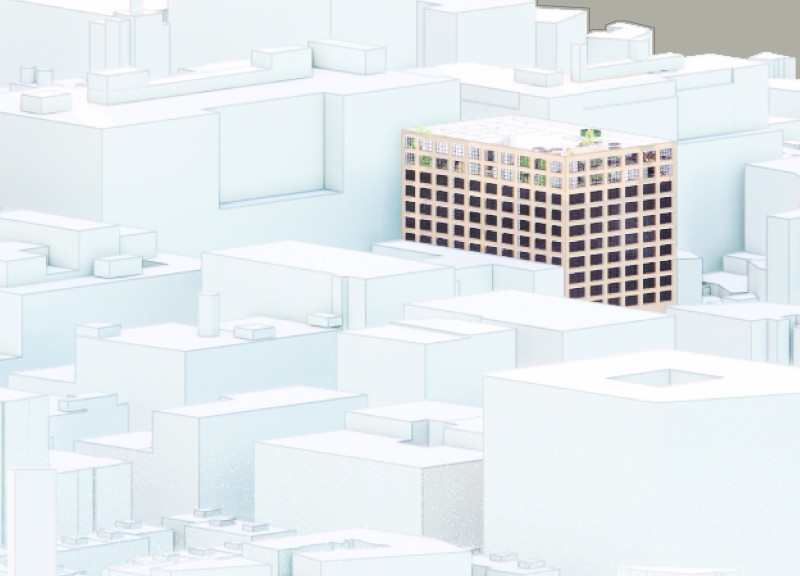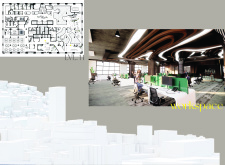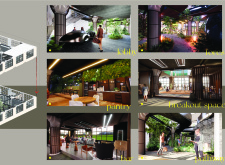5 key facts about this project
Functionally, the project is designed to accommodate a diverse array of activities. Open office suites, communal areas, and specialized spaces are arranged to promote interaction and creativity among occupants. The layout showcases an intuitive flow, with spaces that encourage both focused work and social engagement. By prioritizing natural light and ventilation, the design reflects an understanding of the positive impact that environmental factors have on productivity and overall mood.
At the heart of this architectural endeavor is the concept of merging the urban experience with the tranquility of nature. The project incorporates biophilic design elements, which help to create a seamless transition between the interior spaces and the outside environment. This approach cultivates a workspace that not only prioritizes efficiency but also encourages mindfulness and appreciation for the natural world. The careful selection of materials, such as concrete, glass, wood, and metal, contributes to the project's modern aesthetic while reinforcing its connection to sustainability.
Important parts of the project include areas designed specifically for collaboration and relaxation. The lobby functions as a welcoming entry point, featuring a combination of contemporary design and natural accents that set the tone for the experience within. Breakout spaces are distributed throughout, designed to facilitate informal meetings and encourage spontaneous interactions among employees. Additionally, the inclusion of green walls and landscaped terraces invites nature into the heart of the building, allowing occupants to experience the benefits of greenery in an urban context.
The innovative use of materials is another critical aspect of the design. The choice of concrete provides durability while maintaining a minimalist look that resonates with the surrounding architecture. Expansive glass panels not only enhance the visual connection to the outdoors but also allow ample daylight to filter through the spaces, reducing the reliance on artificial lighting. The use of wood adds warmth and a tactile element, fostering a sense of comfort within the setting. These material considerations contribute to an environmentally conscious framework that aligns with the overarching goals of the project.
Another unique design approach is the strategic incorporation of outdoor elements into the indoor environment. The architectural design ensures that green spaces are not an afterthought but rather integral components of the space. The presence of terraces and decks encourages occupants to engage with their surroundings while promoting a culture of wellness and sustainability. This connection between the indoor and outdoor realms exemplifies the project’s commitment to enhancing the user experience and addressing contemporary societal needs.
In sum, the REI x NYC architectural design project stands out as an exemplary model of how modern architecture can respond to the complexities of urban life while promoting a connection to nature. Its innovative use of materials, thoughtful spatial arrangements, and integration of green elements offer valuable insights into the future of design in urban settings. To explore the architectural plans, sections, and designs further, readers are encouraged to delve deeper into the project presentation for a comprehensive understanding of this successful architectural endeavor.


























